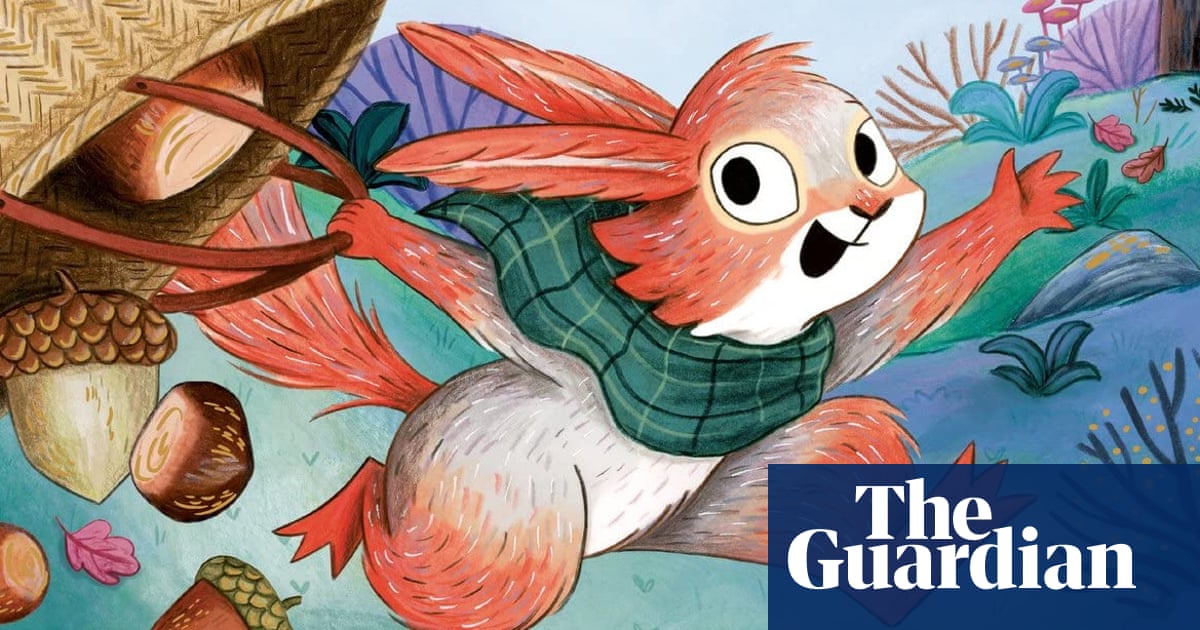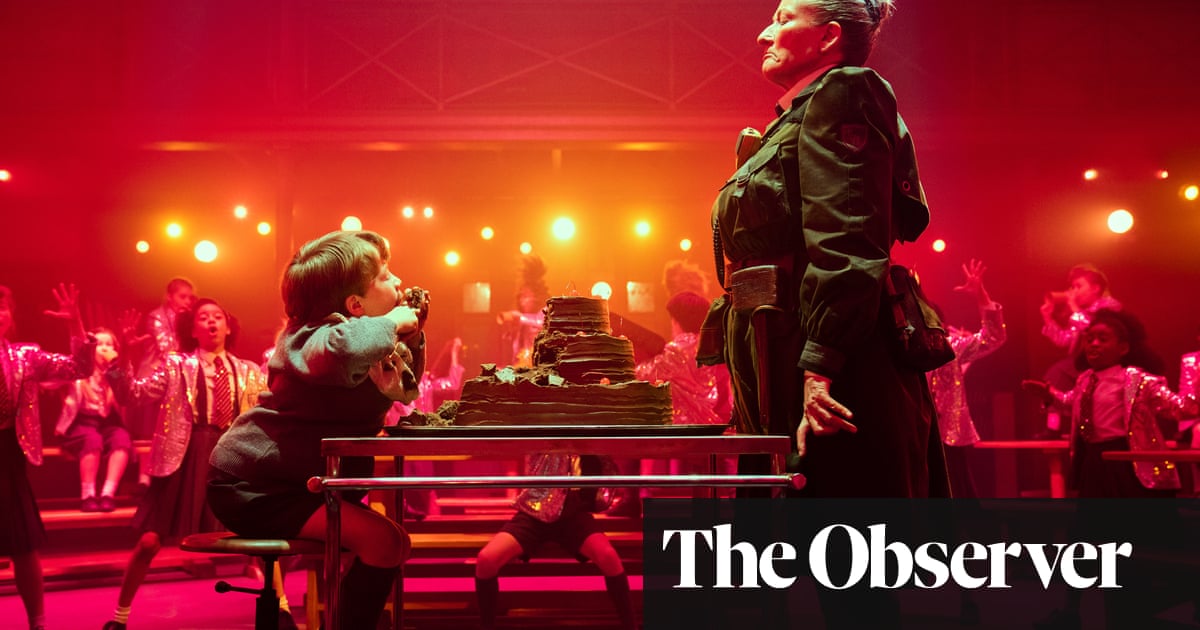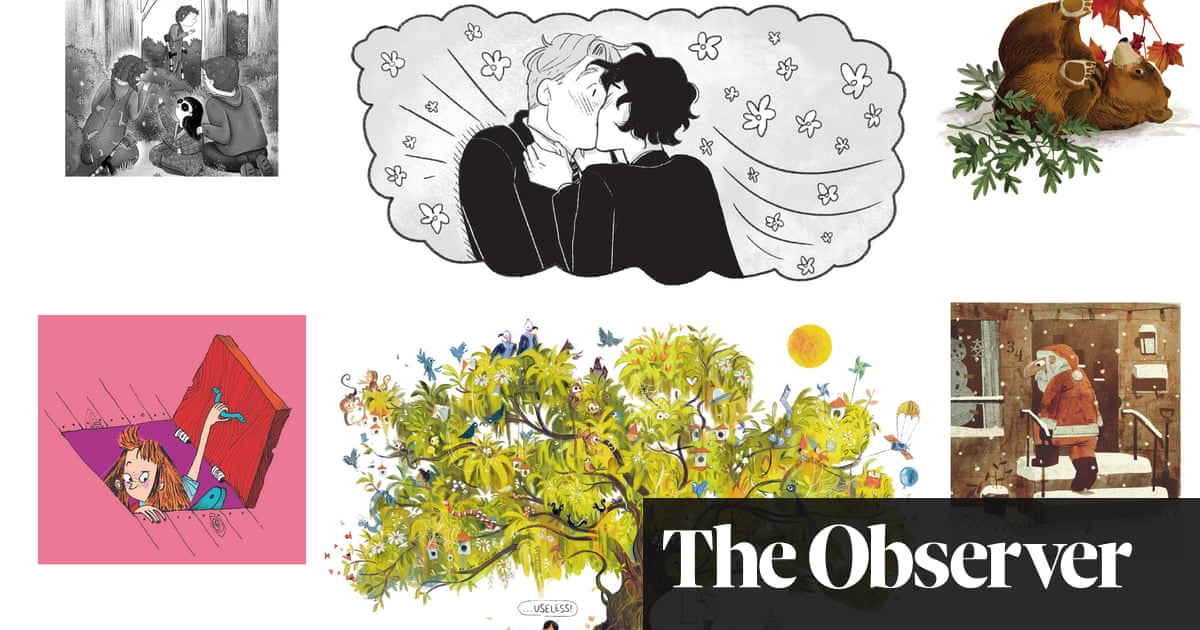
his month there’s an emphasis on change and transition, loss and hopefulness. In picture books, Nicola Davies’s Last (Tiny Owl) is inspired by the true story of Sudan, the last male northern white rhino. Having lost his mother to poachers, a captive rhino lives in a near-monochrome environment with other “lasts” of their species – a sad contrast to the colourful landscapes he remembers. Once returned to the wild, though, he finds he may not be the last after all. Pulling no punches, but inspiring the reader to fight for nature against all odds, the book is delicately balanced between sorrow and hope.
Hope is also invoked in Rain Before Rainbows (Walker) by Smriti Halls and David Litchfield. First released as a free ebook, this dreamlike vision of a girl and fox travelling from darkness and difficulty to a blaze of morning light offers, with its few well-chosen words and heart-lifting illustrations, a moving message of perseverance and eventual joy.
Meanwhile, What Are Little Girls Made Of? (Nosy Crow) by Jeanne Willis, illustrated by Isabelle Follath, is a delightful collection of bouncy feminist nursery rhymes. It answers the title question: “Sun and rain and heart and brain”, and features a Bo Peep who wades into slime to rescue her flock, and a medically qualified queen who can put Humpty back together.
For five-plus, from Isabel Thomas and Daniel Egnéus comes the poignant, essential Fox: A Circle of Life Story (Bloomsbury). A fox sniffs, stalks, feeds her cubs; then is struck by a car and killed. As little creatures feed on her in turn, her body is reduced “to earth, to plants, to air – to the tiny particles that were once a fox”. Thomas’s simple, direct language, with just the right degree of poetic resonance, pairs powerfully with Egnéus’s rust-vivid, atmospheric images; this is the perfect book for talking to children about death.
Nonstop (Phaidon), meanwhile, is the last book from the late, extraordinary Tomi Ungerer. In a world where “flowers had turned into memories” and people have left for the moon, Vasco is left behind, with only his shadow to warn him of dangers at every turn. But when a dying creature entrusts her child to him, Vasco and his new companion must flee successive terrors until they find strange refuge. With a palette of mauvey pinks, twilit blues and velvet black, it’s characteristically weird, unsettling and wonderful.
More straightforward and cheerful, Swapna Reddy’s Ballet Bunnies – The New Class (Oxford University) marks the start of a new series with sweet, sugar-pink illustrations from Binny Talib. Millie is impatient to start ballet lessons, but when another student is unkind, she’s tempted to leave – until she discovers tiny, sassy bunnies living secretly in the school, learning dance steps and sleeping in pointe shoes. A must for small ballet fans.
For eight-plus, spectral charm, stolen inheritance and recalcitrant geese all feature in The Ghost of Gosswater (Chicken House) by Lucy Strange. Agatha believes she is the Earl of Gosswater’s daughter, but then he dies, and her cousin Clarence banishes her. Where does Agatha really belong? Who is the guiding ghostly figure who appears to her? And what is the mystery of the Queen Stone, a great white opal said to be cursed? In her third novel, Strange is at her assured, brilliant best.
When Life Gives You Mangoes (Pushkin) by Kereen Getten is a gorgeously evocative debut set in a Jamaican fishing village. Clara loves her home, her secret hideout and her best friend Gaynah; but she can’t remember last summer, or why she’s frightened of the sea. When an unusual girl arrives from England, Gaynah gets angry with Clara, and suddenly all the past’s secrets are dragged into the light in this instantly compelling story.
Finally, Boy, Everywhere (Old Barn) by AM Dassu follows 13-year-old Sami on his journey from affluent comfort in Damascus to destitution, abuse and mistrust in Britain, via Turkish people-smugglers and terrifying sea voyages. Carefully researched, wholly convincing, it’s a gripping, uncompromising debut, super-charged with the power of empathy.
Teenagers roundup
I, Ada
by Julia Gray, Andersen, £7.99
The product of a doomed marriage between a repressed aristocrat and a scandalous poet, mathematician Ada Byron (later Countess of Lovelace) grew up brilliant, rebellious and original, with a love of “poetical science” and a fierce determination to follow her own path. Following Ada’s development from a precocious five-year-old, this fictionalised biography of the woman now considered the world’s first computer programmer marries meticulous research with absorbing readability, wit and lightness of touch, immersing the reader in a world of repressive etiquette, wild imagination and untapped potential.
Cane Warriors
by Alex Wheatle, Andersen, £10.99
Alex Wheatle departs from his award-winning contemporary novels for a superb foray into historical fiction, based around the 1760 Jamaican plantation rebellion known as Tacky’s war. Fourteen-year-old Moa and his fellow freedom fighters want to tend land, raise families and live beyond the reach of ownership and abuse – but to do so, they must rise up and fight. Wheatle’s characteristic kennings and coinages (the overseers’ whips are “back-rippers”, for example) heighten this intense, affecting story of courage, bloodshed and commitment to freedom at all costs.
The Black Kids
by Christina Hammonds Reed, Simon & Schuster, £7.99
Los Angeles, 1992: Ashley Bennett and her friends are privileged teenagers, fooling around by the pool as high school draws to an end. But when four police officers are acquitted after viciously beating Rodney King, LA is consumed with rage. Suddenly there’s a stark line between white and black, and Ashley’s parents – always careful to be the perfect black family – are drawn in to the riots as her rebellious sister gets involved. And when Ashley starts a rumour about another black student, she’s forced to ask painful questions about who she is and where she fits. A nuanced, outstanding debut, ideal for Angie Thomas fans.








